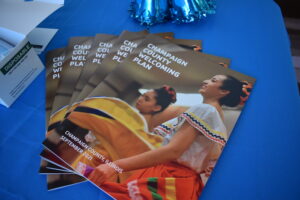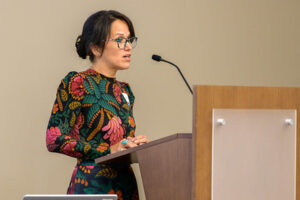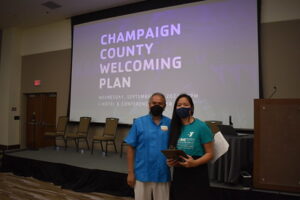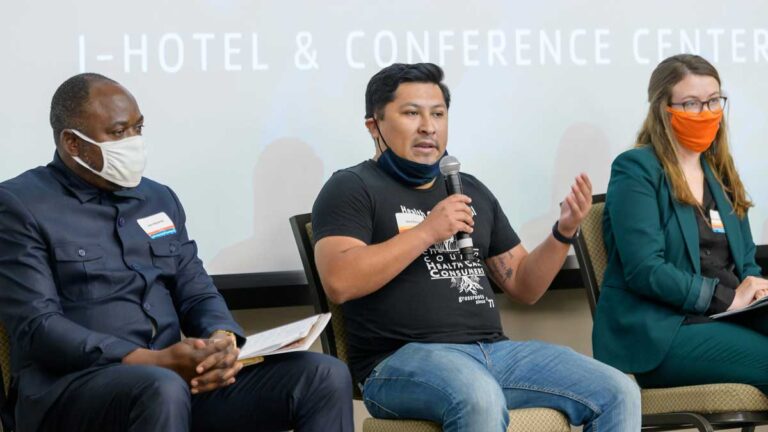CHAMPAIGN – Immigrants make up about 12% of Champaign County’s total population and have contributed to the county’s economic growth in recent years, contributing tens of millions of dollars in state and local taxes and injecting hundreds of millions of dollars into the local economy.
At the same time, the rapid rise in the immigrant population over the past decade has revealed weaknesses in the systems that exist to meet the needs of Champaign County’s diverse community.
In order to understand the scope of the problem and outline steps toward solutions, the University YMCA’s New American Welcome Center led a years-long effort that has resulted in a new report: the Champaign County Welcoming Plan.
Released on Sept. 15, the document outlines a strategy for leveraging resources to build a more inclusive and equitable community. The plan is divided up into five sections, each focused on a different area of need: economic opportunity, public safety, health and well-being, language and education, and citizenship and civic participation.

More than half of Champaign County’s 25,000 foreign-born residents entered the U.S. since 2010. And from 2015 to 2019, immigrants made up about a third of Champaign County’s population growth.
The report cites data showing that about a third of all foreign-born residents in Champaign County live below the federal poverty line, compared to 18% of residents who were born in the U.S. — and the authors note that communities with the least economic and social capital are the most vulnerable to exploitation and isolation.
The Welcoming Plan recommendations are based on the results of surveys, which were conducted with 80 local organizations that work with immigrants and more than 800 county residents from 38 countries, speaking 6 languages. More than 80 local employers were also asked about the challenges they face in recruiting and hiring immigrant workers as well as serving the local immigrant population.
At an event at the I-Hotel in Champaign on Wednesday, Sept. 15, more than a dozen community leaders who were involved in the plan’s development discussed the recommendations.
John Matanda, president of the Congolese Community of Champaign County, said communication and language barriers are among the biggest challenges he’s seen new immigrants face.
“We come as an immigrant. We have to survive,” Matanda said. “We have questions, we have needs, but we don’t know where to go. We don’t know what to do. We don’t know where to start.”
Amanda Gray, a parent liaison with the Unit 4 School District and president of the board for Immigrant Services of Champaign-Urbana, shared a story to highlight the need for more support for language and education services for immigrant families.

She said she recently spoke with the father of a Unit 4 student. The man’s first language is Q’anjob’al, a primarily oral language, and he only recently learned Spanish — the language he uses to communicate with Gray — since coming to the U.S. from Guatemala. He reached out to Gray after his daughter brought home a paper from school with information about an upcoming active shooter drill.
“He was really confused, and if he didn’t have a trusted person to contact and ask, his daughter likely would have gone to school and thought that the active shooter drill was real,” Gray said.
Better language and education supports are needed, she said, so that people can understand the roles of different organizations and institutions in their lives.
“Your support network, your enfranchisement, your rights, your stability, and your sense of belonging, how well you speak English, how much you can read, and your basic civic knowledge all impact your income security, your stress level, and your ability to survive and thrive,” Gray said.
Lisa Wilson, who leads the Refugee Center in Urbana, spoke about the barriers immigrants face when seeking pathways to citizenship. In addition to language challenges, many immigrants have limited time to take citizenship classes due to working long hours and can also struggle with the costs.
“It costs $725 to apply for citizenship. And that’s without the increase that was proposed by the Trump administration. It was going to go up to over $1,000,” Wilson said. “For a family of five, that’s going to be $3,625, which is a considerable barrier for people who are really trying to make it paycheck to paycheck.”

To help address these challenges, the plan recommends increasing access to naturalization services and immigrant legal assistance and developing immigrants as advocates and leaders.
Regarding access to health care, 41% of all foreign-born survey respondents said they have a primary care doctor or medical home, just over a quarter said they have regular dental care and about a fifth said they get regular preventive care. More than 40% said they occasionally, often or always have trouble understanding during conversations with health care providers. The Welcoming Plan presents strategies for removing barriers to healthcare, building trust and providing culturally appropriate and trauma-informed services.
The Welcoming Plan also includes highlights from “listening sessions” conducted with immigrants, aimed at further illuminating the challenges and opportunities highlighted in the survey data:
-
African immigrant parents shared how factory shifts and long hours made it difficult for them to be on the same schedule as their children, and an unfamiliarity with the US school system could lead to miscommunication with their children’s teachers.
-
Chinese immigrants discussed the difficulty in understanding and using English in contexts such as doctors’ visits, where medical terminology is needed to convey their issues properly with the healthcare provider.
-
A Latino immigrant family shared the anguish of trying to find mental health support for a family member while simultaneously dealing with communication issues, mistrust of providers, and stigmatization within their ethnic community.
-
English Language Learners in high school reported a wide range of accessibility barriers such as securing legal assistance, missing class because of work, and managing mental health challenges.
At the event on Sept. 15, Urbana Mayor Diane Marlin encouraged attendees to consider how they and their organizations can take action to address the needs and challenges identified in the new report.
“The work is only beginning, and each of us has a role to play,” Marlin said. “I know that together, we can fully harness the strengths, talents and contributions of each person to build our shared prosperity.”
Christine Herman is a reporter at Illinois Public Media. Follow her on Twitter: @CTHerman
EDITOR’S NOTE: An earlier version of this story incorrectly stated Marlin’s title.

